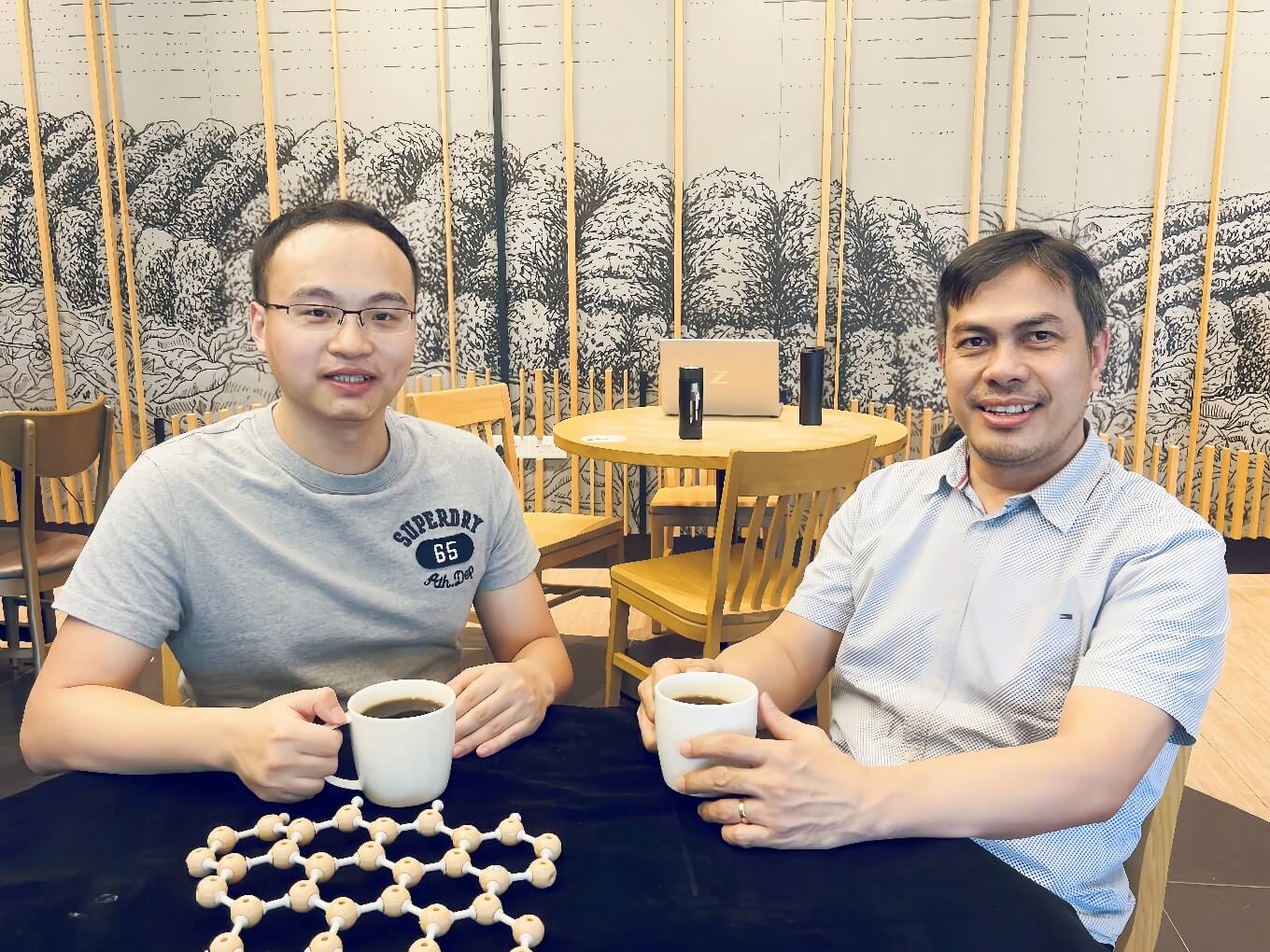Celebrating the first YIRG award in the Physics Department at NUS
Every December, Dr Hu Junxiong and his supervisor, Prof Ariando, meet at Starbucks, UTown, to annually summarise their achievements and plan for the next year. This year, they gather to celebrate Junxiong receiving the 2023 Young Individual Research Grant (YIRG) and the Ministry of Education (MOE)-Tier1 grant. Junxiong is the first young scientist to receive YIRG funding and also the first non-faculty member, as a research fellow, to receive MOE funding in the Physics Department at NUS.

The YIRG grant, awarded by the Agency for Science, Technology and Research (A*STAR) Singapore, aims at grooming young researchers in conducting independent research. Highly competitive, it aims to foster independent research among young scientists. Junxiong remarked, “I am honored to receive this YIRG award, and I believe it can inspire more young scholars in the physics department to strive for it. With the help of YIRG, I can enhance my leadership abilities in research planning, execution, and dissemination.”
Junxiong’s project involves developing hybrid Dirac 2D materials and functional oxide heterostructures and interfaces. He aims to fully utilize oxide functionalities, including metallicity, ferroelectricity, ferromagnetism, and superconductivity, to study how they affect the interface properties of 2D materials. Employing the ‘materials-by-design’ approach, Junxiong has made significant breakthroughs in the study of emergent properties in quantum materials, inducing the giant magnetoresistance effect [1], large and tunable spin splitting effect [2], and the controlled alignment of supermoiré lattice [3].
[1] Junxiong Hu et al., Advanced Materials. 32, 2002201(2020).
[2] Junxiong Hu et al., Advanced Materials. Doi.org/10.1002/adma.202305763 (2023).
[3] Junxiong Hu et al., Nature Communications 14, 4142 (2023).
